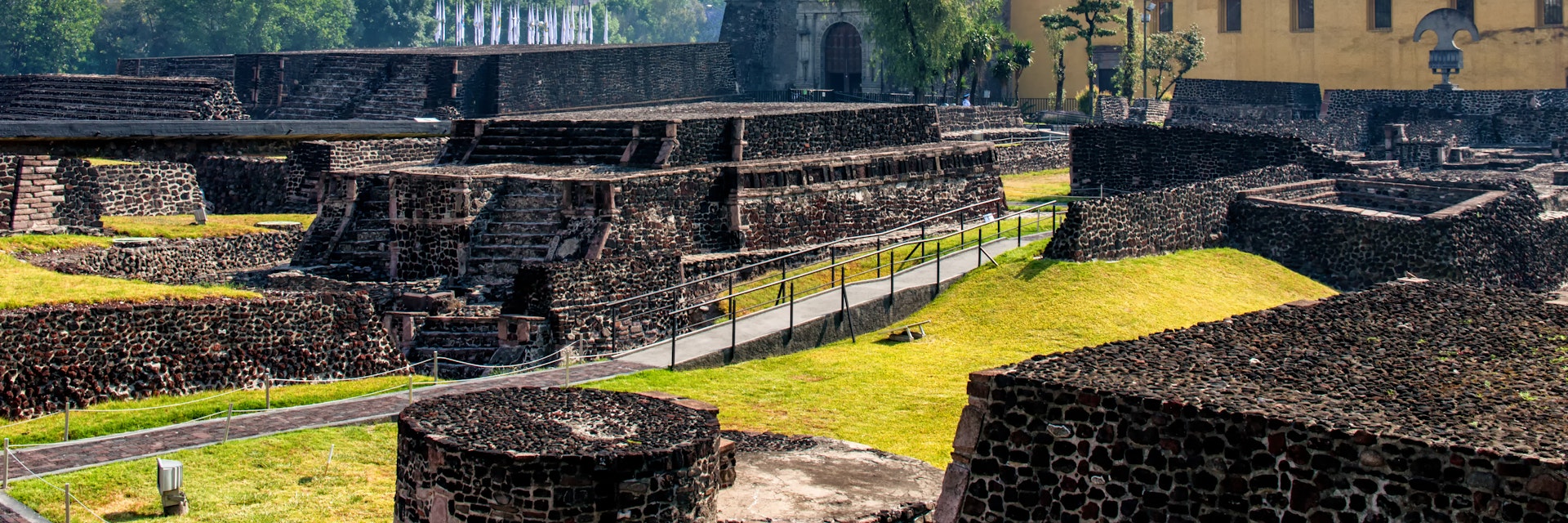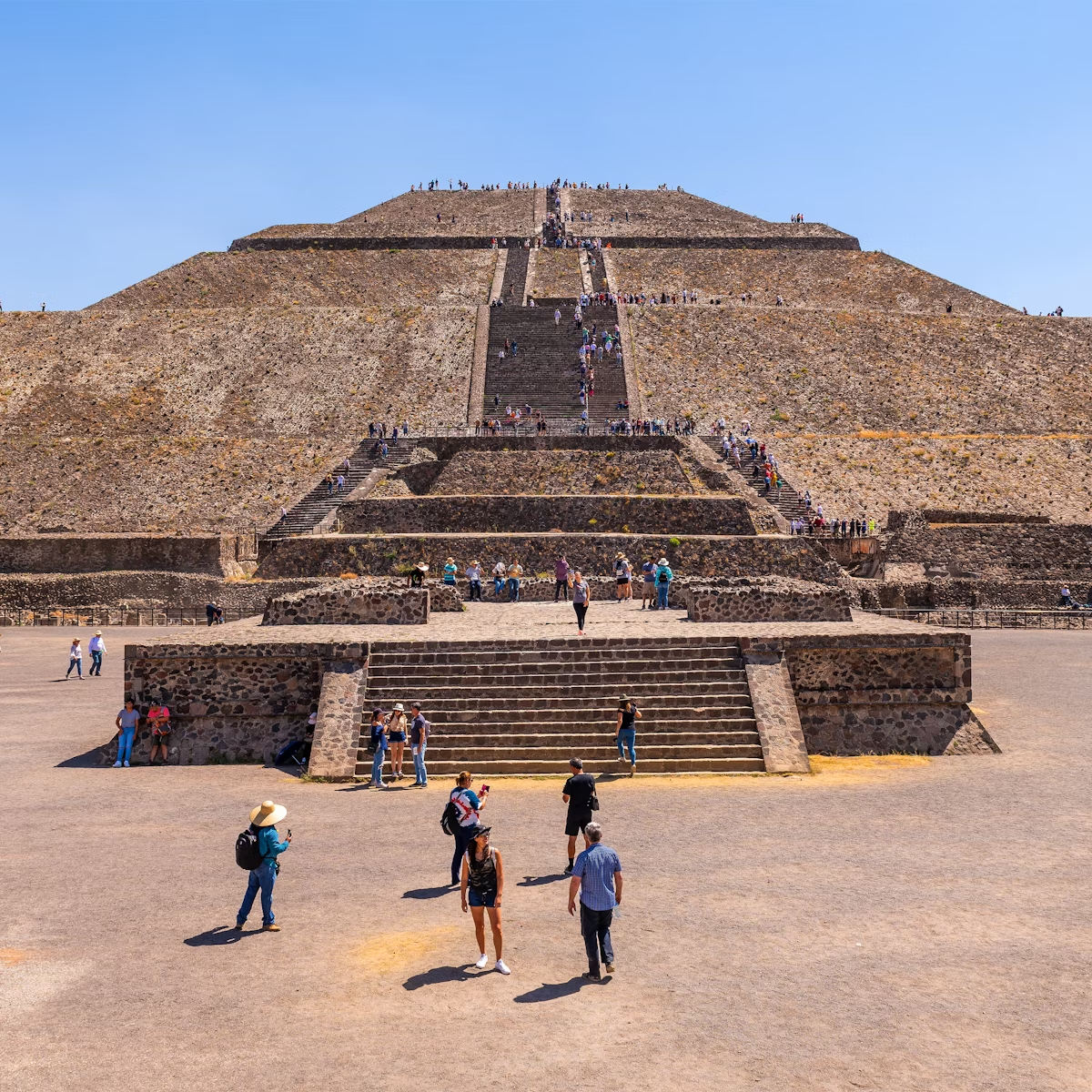So named because it symbolizes the fusion of pre-Hispanic and Spanish roots into the Mexican mestizo identity, this plaza displays the architectural legacy of three cultural facets: the Aztec pyramids of Tlatelolco, the 17th-century Spanish Templo de Santiago and the modern tower that houses the Centro Cultural Universitario. You can view the remains of Tlatelolco’s main pyramid-temple and other Aztec buildings. The double pyramid on view has twin staircases that once supposedly ascended to temples dedicated to Tláloc and Huitzilopochtli.
Tlatelolco was previously believed to be founded by an Aztec faction on a separate island in Lago de Texcoco in the 14th century and later conquered by the Aztecs of Tenochtitlán. But a pyramid excavated on the site in late 2007 actually predates the establishment of Tenochtitlán by as much as 200 years. All agree, however, that Tlatelolco was the scene of the largest public market in the Valle de México, connected by a causeway to Tenochtitlán’s ceremonial center.
During the siege of the Aztec capital, Cortés defeated Tlatelolco’s defenders, led by Cuauhtémoc. An inscription about the battle in the plaza translates as, ‘This was neither victory nor defeat. It was the sad birth of the mestizo people that is Mexico today.’ Recognizing the significance of the site, the Spanish erected the Templo de Santiago here in 1609, using stones from the Aztec structures as building materials. Just inside the main doors of this church is the baptismal font of Juan Diego.
Along Eje Central Lázaro Cárdenas, northbound trolleybuses pass right by the Plaza de las Tres Culturas. Metrobús línea 7 runs along Reforma from Chapultepec and El Ángel passing here at the 'Tres Culturas' stop.







